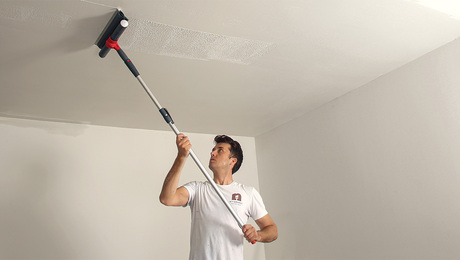I am going to start framing my shop this weekend, a 40×80 pole barn 30×40 of it will not be heated. I am wanting to heat it with radiant heat with my heat being from a wood boiler. I plan on taking this job on myself and I am looking for any help I can get on this.
Also I am going to have the floor poured 5″ thick, my concrete contractor I use on a regular bases said to go with the 5″ pour since I will have some heavy machinery setting on it. Will this affect the heat transfer in any way?















Replies
Make sure you put the heat tubes in the unheated part with its own zone . then when you expand your shop it will have heat also. The floor will be warm under the machines that you park in there .Not like tube heaters on the ceiling . so it will not realy affect the heat transfer.
I agree with Don, Put the tubing in the floor of the unheated space too. You just may not use it now but it'll be there when you eventually want it. As to the 5" pour, I would think that as long as you have insulation under the slab and the tubing is centered in the slab, it should work fine. It'll probably take longer to heat up the additional mass but it'll also take longer to cool it off when you raise the doors to bring in that heavy equipment. Also, if you have two zones, you wouldn't have to keep both sides at the same temp. You could keep the equipment bay slightly above freezing and still keep your shop space nice & toasty.
BILL
My basement workshop has radiant heat. Our builder:
Exterior perimeter drains are wrapped in a gravel & geotextile envelope too.
We only have one zone in the basement. I'd consider more - just have the plumber check the manifold capacity. Also, it sure helps to have valves in each zone to release air. Price of saving $ for valves isn't worth the trouble.
are you going to keep the shop heated consistently? that's a lot of mass. You won't like it if you are planning on turning up the heat just before you go work in the shop..
-=Northeast Radiant Technology=-
Radiant Design, Consultation, Parts Supply
http://www.NRTradiant.com
yes it will, I plan on setting the temp at the slab to about 65
I thought that the whole point of radiant heat was not to turn it up and down a lot. I thought that the idea was to take advantage of the mass so that it was more economical and so the temp stayed even. Am I wrong here?
BILL
You are not wrong.
Radiant is slow to heat & slow to cool."Guns don't kill people----- Husbands that come home early do." Larry the cable guy
You are correct. However, that's not how a lot of people want to run the heat in their shops which are often "periodic use" areas, and I just wanted to make sure he understood that it should be run consistently.-------------------------------------
-=Northeast Radiant Technology=-
Radiant Design, Consultation, Parts Supply
http://www.NRTradiant.com
I did my shop like Daveinnh shows. You should pressure test the system before the pour and then leave it pressurized when the concrete goes down. I didn't have the manifold in time but got lucky with a crew that was careful with their tools.
Steve.